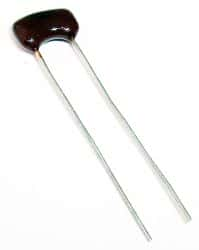Although cartoons tend to show a person being fried due to electrocution as the body flashes like fireworks with the bones visible to everyone, in reality, things do not work that way. Electricity does not actually fry you – unless you are struck by a thunderbolt. However, only a frighteningly miniscule amount of electricity is enough to snuff out your life.
At the beginning, it is necessary to get some facts clear. Some major units used by electrical engineers are – volts, amperes, watts, and ohms. Volts describe the difference in potential across two points, while amperes describe the amount of current flowing between the two points. Watts is a measure of the power flow between two points, and is the product of volts and amperes related to the two points. Ohm measures the resistance of a substance to the flow of current through it.
Plumbing offers a suitable analogy. Volts can be equated to the water pressure between the two ends of a pipe. Current is the same as the flow rate, while resistance is similar to the inner diameter of the pipe. As you increase the volts or the pressure, current, or water flow increases, assuming the diameter or resistance of the pipe has remained the same.
Scientists have conducted experiments on healthy humans to find an answer to “How much electricity is needed to kill a human?” The surprise answer is, only seven milli-amperes, for three seconds. Heart is an electrical pump and electricity reaching the heart interrupts its rhythm. The human heart goes arrhythmic and stops working when a current of seven milli-amperes passes through it continuously for three seconds. After that, the other parts of the body begin to shut down as well. Skin-penetrating Tasers do not kill, as the electric pulses they generate are of much shorter duration than that from three seconds.
However, our bodies have their own defenses against electric shock and that is why millions of people do not drop dead every minute with ultra-tiny shocks from the different electrical and electronic gadgets they always use. The major defense comes from the skin – it has a resistance of about 5,000 to 15,000 ohms. The clothes people wear add to the resistance of their skin. To break through such a formidable resistance, the static shock necessary just only to sting your skin is about 20,000 Volts. However, a person may not die from high-voltage electric shock if the electricity did not pass through the heart. If it traveled along the outside of their body, they would live, but likely with a scorched skin. This happens mostly when the skin is wet.
A lightning bolt is a different game altogether. One bolt of lightning can hit with over a billion volts. The resistance air offers to electricity is about 10,000 volts per centimeter. Therefore, for electricity simply to move current through 10 cm of air, the voltage required is 100,000 volts, and this is between the cloud generating the electricity and the earth below our feet. As high-voltage electricity or lightning takes the path of the least resistance when passing to the earth, it passes through the outer surface of the body, scorching the skin.

